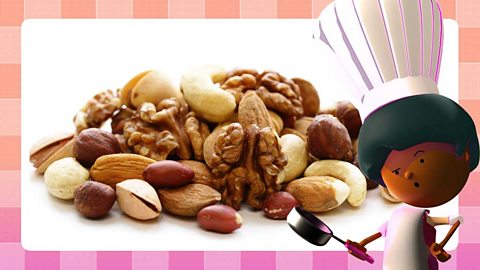Baking bread
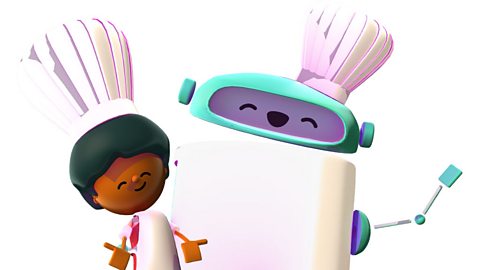
Bread is a staple food for most countries of the world.
All breads are made from a basic mix of flour and water.
The type of flour may change around the world as different countries grow different grains.
Many types of bread are made by baking it in an oven.

Equipment for baking bread
To make bread, you will need:
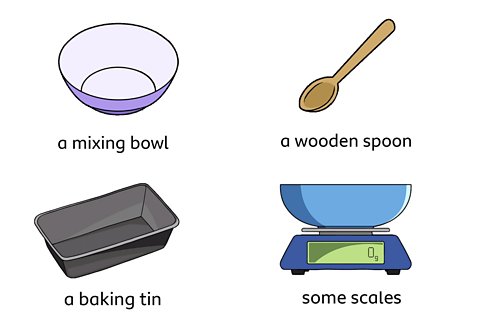
Video: Making bread
Join Suzie, Jack and Ríona in the kitchen to learn how to knead, roll and shape dough.
Suzie: I'm in my kitchen with Jack and Ríona. We've just washed our hands and we're about to try making bread.
Lots of people from different countries around the world eat bread and make it in different ways. Do you recognise any of these breads?
Jack: These are breadsticks, they're from Italy. I have them for my break sometimes. They're really crunchy!
Ríona: That's naan bread I've had that before.
Suzie: It's an Indian flat bread. What kind of texture does it have?
Ríona: It's fluffy and very tasty!
Suzie: We also have Irish soda farls, French baguettes, and German pretzels.
We're working on some simple dough to make a loaf of bread.
One of the most important things when making this type of bread is to knead the dough. To start with, we put flour on the worktop and on our hands.
Jack: So, the dough doesn't stick!
Suzie: So first of all, we stretch the dough, and then we're going to fold it over, turn it and then we begin to repeat and what this does is it builds strength in the dough.
So knead the dough. Press and pound. Push down and fold. And turn it around. A bit of extra flour on your hands stops the dough from becoming too sticky to work with!
Ríona: Knead the dough. Press and pound.
Jack: Push down, fold. And turn it around.
Suzie: We're really working our arm muscles. It's hard work, isn't it?
Ríona: Yes!
Suzie: I think that's enough kneading for now.
We have to pop the dough into a mixing bowl, and then we're going to cover it with a clean, damp tea towel and we're going to put them in a warm place to rise for at least 30 minutes.
Once the dough has rested, we can shape it and bake it in the oven. Ask an adult to put it in the oven for you.
Jack: I am rolling mine into a ball. It's so soft.
Ríona: I'm going to make mine a long sausage shape.
Suzie: I'm going to push mine into the shape of a loaf tin. That's the great thing about dough, you can create so many different shapes.
Ríona: I can't wait to see how it turns out.
Jack: It smells good! And look how fluffy it is!
Suzie: Good work. Perfectly baked bread.
What is yeast?
To make certain types of bread, yeast can be added as a Raising agentA raising agent is used in baking to help the dough to rise. You can use it when making bread or cakes. Yeast and baking powder are both raising agents. during the dough-making process to help make the dough rise.
Yeast is a type of FungusA fungus is a living thing that is neither a plant nor an animal. Mushrooms, mould and yeast are all examples of a fungus. Dry or fresh yeast can be bought from a supermarket.
When it is used correctly, yeast produces a gas called Carbon dioxideCarbon dioxide is usually found in the air around us in the form of a gas. When animals and people breathe out, they release carbon dioxide into the air. which helps the bread to grow fluffy and light.
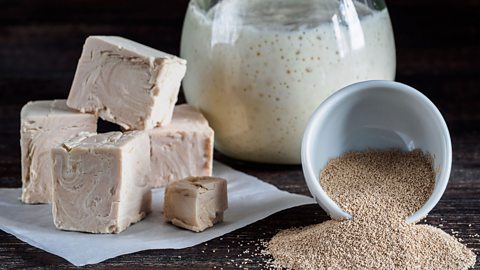
Yeast works by feeding on the sugars found in flour and is activated when mixed with water.
The water must not be too hot, otherwise it will kill the yeast.
Kneading dough
Kneading means to work the dough with your hands. We knead the dough to help develop the gluten.
Gluten is a type of protein that helps to strengthen the texture of the bread and helps during the rising process.
Some people may be allergic to gluten. There are gluten-free flours available.
These steps show you how to knead dough.
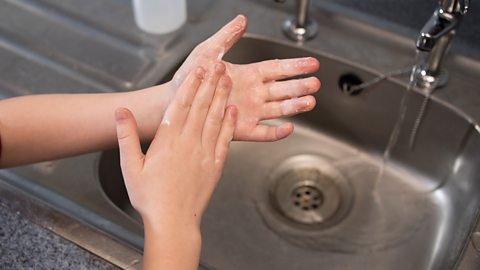
Image caption, Wash and dry hands
Before you start, always wash and dry your hands and put a clean apron on.
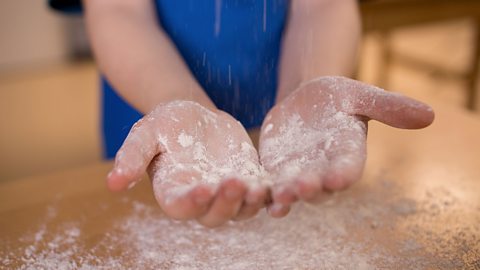
Image caption, Add flour
Firstly, add flour to the table and your hands to stop the dough from sticking.
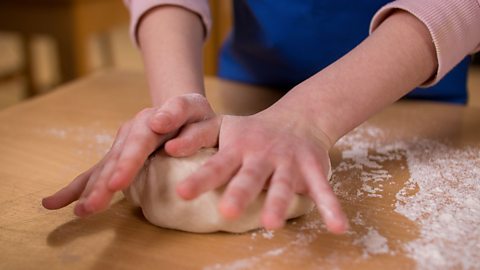
Image caption, Press and pound
Start by pressing and pounding the dough.
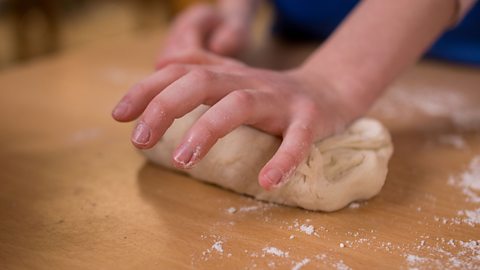
Image caption, Push down
Next, push down on the dough with your hand.
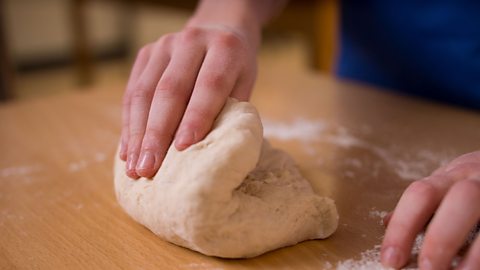
Image caption, Fold
Now fold the dough in half.

Image caption, Turn it around
Then turn the dough around. Repeat the process. Keep kneading the dough for ten minutes until it becomes firmer.
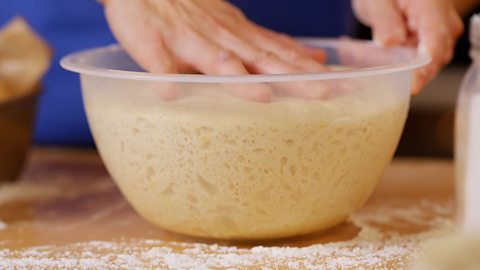
Image caption, Prove
After kneading the dough, it needs to be placed in a bowl, covered with a clean, damp tea towel and left in a warm place for at least 30 minutes. After a while, the dough will increase in size because the yeast produces carbon dioxide. The gas gets trapped and so the dough rises.
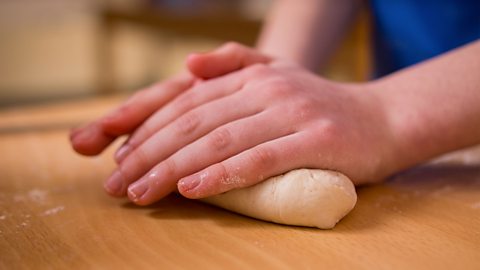
Image caption, Shape the dough
Now it's time for the fun part! The dough can now be removed from its container and shaped and styled before baking. You can use a rolling pin if you need to flatten the dough or you can shape it with your hands.
1 of 8
Shaped breads
Bread can come in all different shapes and sizes. Some can be plain and some can be decorated by ScoringScoring is a skill we use to scratch or cut lines into objects, such as dough, to make a pattern. to make patterns on the top.
Here are some examples of shaped bread.
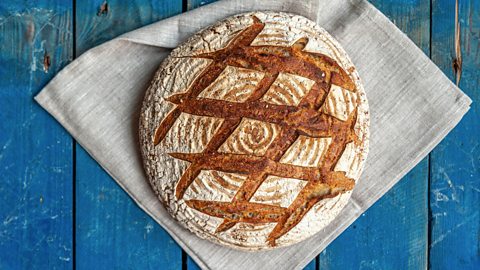
Image caption, Scored bread
This bread has been scored with a knife before being added to the oven to create the criss-cross pattern.
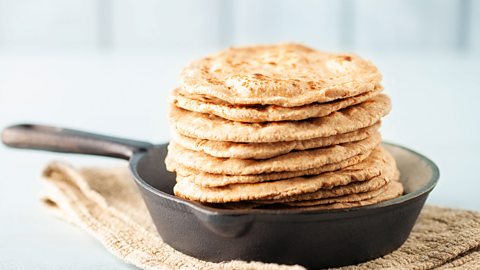
Image caption, Chapatis
These chapatis have been made without yeast, which is why they are flat.
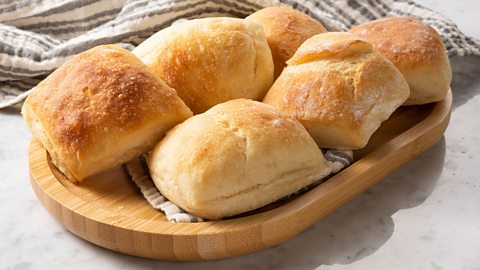
Image caption, Bread buns
These ciabatta bread buns contain yeast, which makes them rise and rounded in shape.
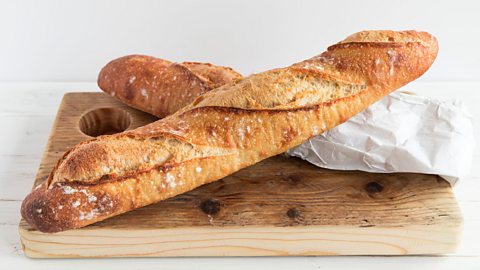
Image caption, Baguettes
Baguettes are made by rolling the dough ball into a long thick rope of dough. This baguette has been scored with a knife to create the pattern on top.
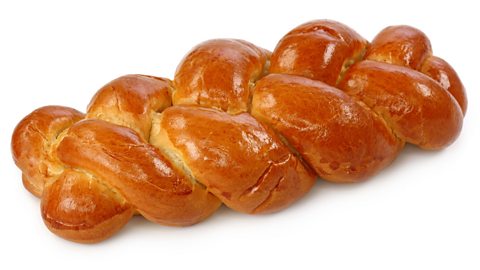
Image caption, Plaited bread
The plaited bread starts as two or three long ropes of dough which are then plaited and overlapped to create this shaped bread design.
1 of 5
Bread from around the world
Bread varies in different countries because of two main reasons:
- the ingredients that are available.
- the methods that are used.
Ingredients
The ingredients used to bake bread are different around the world because different countries can grow different crops.
The crops they can grow depend on the weather, the soil and the water available.
Methods
The methods used to bake bread vary from country to country.
A lot of countries bake their bread in the same way that their ancestors did.
Some countries use their surroundings to bake their bread. Iceland has a lot of heat under the ground, known as geothermal energy. People here use this to help bake a special kind of bread called 'thunder bread'.
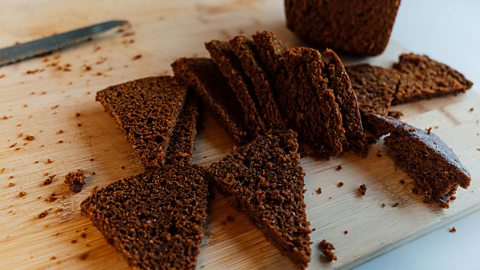
Why do some countries choose different grains?
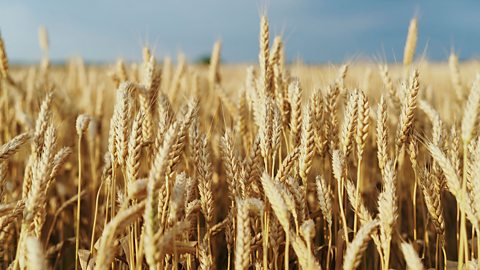
Some grains, like barley, grow best in colder places, like France, Germany and Russia.
In the UK, people eat a lot of bread made from wheat flour.
In Mexico, a lot of breads are made from cornflour.
Other grains, such as rice used for rice flour, grow better in warm places, such as Thailand and Vietnam.
Today, countries can easily transport, sell and share their grain, so it’s much easier to make different breads from around the world.

World breads
Let's find out more about the types of bread eaten around the world.
Key words
| Raising agent | A raising agent is used in baking to help the dough to rise. You can use it when making bread or cakes. Yeast and baking powder are both raising agents. |
| Fungus | A living thing that is neither a plant nor an animal. Mushrooms, mould and yeast are all examples of a fungus. |
| Carbon dioxide | Carbon dioxide is a gas found in the air around us. When animals and people breathe out, they release carbon dioxide into the air. |
| Scoring | Scoring is a skill we use to scratch or cut lines into objects, such as dough, to make a pattern. |
Quiz: True or false?
Test your bread knowledge with this true or false quiz.
SATs preparation resources. activitySATs preparation resources
Get ready for the SATs papers with videos, activities, quizzes and games to refresh your knowledge and practise your skills.

More on Cooking and nutrition
Find out more by working through a topic
- count6 of 13
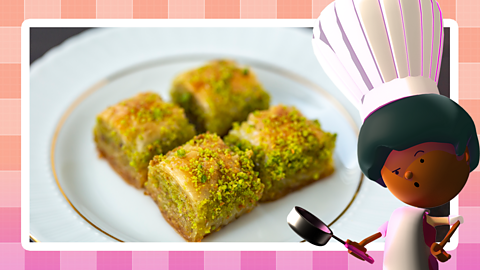
- count7 of 13
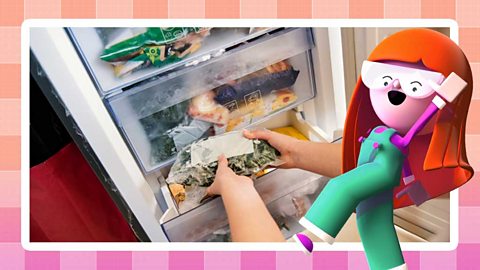
- count8 of 13
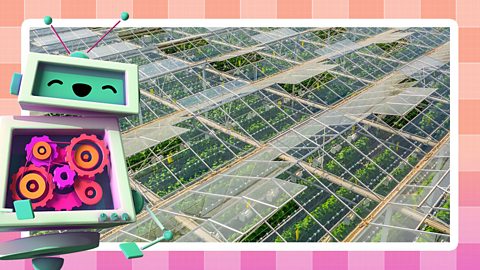
- count9 of 13
